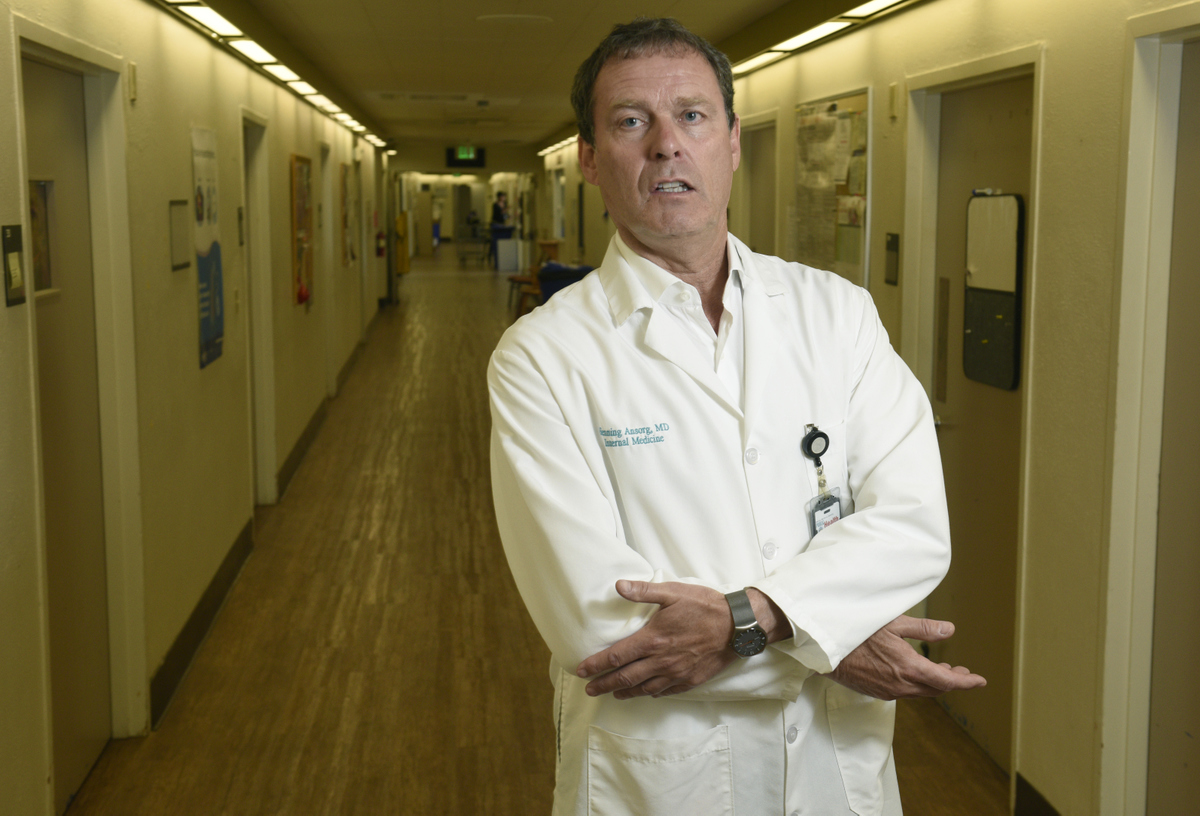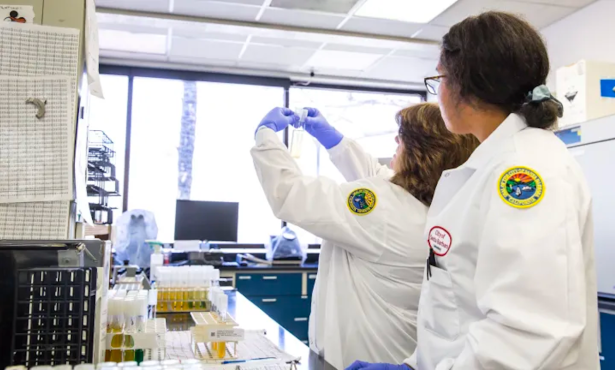As Santa Barbara’s COVID-19 Cases Grow, So Do Unanswered Questions
Health Officials Decline to Share Information About Predictions or Plans

[UPDATE 3/31:] Since the writing of this story, Public Health officials have released information on county surge projections and the availability of medical equipment. The original story follows.
As hospitals across California brace for an anticipated surge of new COVID-19 cases, three Ventura County doctors published an eye-opening letter that outlines the best- and worst-case scenarios for their community. The Saturday afternoon message served as a plea for residents to take the risks seriously.
“Let’s put this in perspective for our county, population approximately 850,000,” wrote doctors Daniel Cox, Nessa Meshkaty, and Melissa Barger. “In a worst-case scenario, 1 in 5 confirmed cases of COVID-19 will progress to serious illness requiring hospitalization. One quarter of those hospitalized patients with COVID-19 will further decline to the point where they need a ventilator and life support to survive. Using an epidemiologic model recommended by the California Department of Public Health, we find that without strict social distancing, we will need 18,000 ventilators to take care of the sickest patients at the peak of the surge on Day 58 of the outbreak. Yet we have only an estimated 180 ventilators across the eight hospitals in Ventura County.”
But, they continued, “If we are able to sustainably reduce social contact by 60-70 percent and improve testing and treatment, the aforementioned epidemiologic model suggests we could improve from that worst-case scenario of 18,000 ventilators needed on Day 58 to a much more manageable peak of 475 ventilators on Day 170 of the outbreak. That extra time is critical for our hospitals to build ventilator capacity and allow for the developments of novel treatments.”
The public statement was the latest example of unvarnished transparency from Ventura’s health community that contrasts with Santa Barbara’s comparably opaque approach to official messaging during the COVID-19 crisis.
At a press conference this Monday, for example, Dr. Henning Ansorg, Santa Barbara County’s public health officer, said his team had also studied best- and worst-case scenarios, but he was “not at liberty to disclose those findings. … They’re really just planning models we have to use.” Henning also complained about residents not social distancing, as he described seeing large groups of people gathered over the weekend.
Of the 88 known COVID-19 cases in Santa Barbara on Monday ― a dramatic jump from 47 just three days earlier ― 14 people are hospitalized, with 10 in the Intensive Care Unit. Nationwide testing shortages continue to minimize the true scope of the regional outbreak, as only 726 Santa Barbara residents ― or just over 0.15 percent of the county’s population ― have been screened.
Over the past two weeks, reporters repeatedly tried to ascertain the exact number of ventilators available in Santa Barbara County ― limited supplies being a constant topic of conversation at the national level and accurate counts being a critical metric for local surge planning ― but were ultimately told the Public Health Department doesn’t track that information. It was only when Assemblymember Monique Limón asked the same question at a virtual town hall last week that officials divulged there were a mere 32 ventilators spread across the county’s five hospitals.
On Monday, however, Ansorg disputed the accuracy of the 32 figure, which had come directly from Public Health Department Director Dr. Van Do-Reynoso. “I do know that that number is too low,” he said, “but I do not know the exact number that we have. We do have a cache at the county available that is being refurbished and refreshed for use if needed, and the state is actively procuring new ventilators as well, and hopefully we can access that cache when we need them.” Asked about the process by which Santa Barbara would request and receive ventilators from the state, Ansorg said he was “not exactly sure how it was decided.”
Many other questions posed to the Public Health Department and Cottage Health about Santa Barbara’s capacity to test for the coronavirus and care for a spike in COVID-19 patients have received conflicting answers or gone completely ignored. For example: What is our current daily testing capacity, and what is the average turnaround time for results? What are we doing to improve the frequency and speediness of tests? Why doesn’t Santa Barbara have a public testing lab like the ones in Ventura and San Luis Obispo? How many COVID-19 cases is Cottage Hospital anticipating over the next week? The next month? What is the predicted number of ICU beds that will be needed? How many ventilators are in use now, and how many more might be required? How long do we think Cottage’s supply of protective equipment will last? What is the staffing contingency plan for when doctors and nurses get sick? And so on.
During the press conference, Ansorg said he and other officials had met over the weekend to discuss surge preparations. “Our team of experts at the Public Health Department has been planning and thinking ahead over the weekend and has come up with scenarios of what to expect for the near future as it relates to illnesses, hospitalizations, and health-care needs in Santa Barbara County.” He provided no other details.
The timing of the meeting was noteworthy because it was nine days ago, on March 21, that the California Department of Public Health published its “COVID-19 Health Care System Mitigation Playbook.” It stated in bold lettering: “Health care facilities need to enact their surge plans now to create overflow space for screening, triage, isolation, and transfer/discharge, including conversion of outpatient space for inpatient use and using non-patient areas for patient care. … Because this situation will likely escalate quickly, potentially within hours or days, hospitals must solidify their plans now based on the most extreme potential numbers, not conservative estimates.”
This Sunday, the Centers for Disease Control (CDC) outlined new reporting guidelines for regional health care facilities. It asked that hospitals and clinics fill out daily spreadsheets by 5 p.m. with information on their ICU bed occupancy, overflow capacity, and ventilator availability. On Monday morning, the Independent asked Cottage Hospital and the Public Health Department for copies of Santa Barbara’s spreadsheets as they’re sent to the CDC over the course of the coming week. We have not received a reply.


